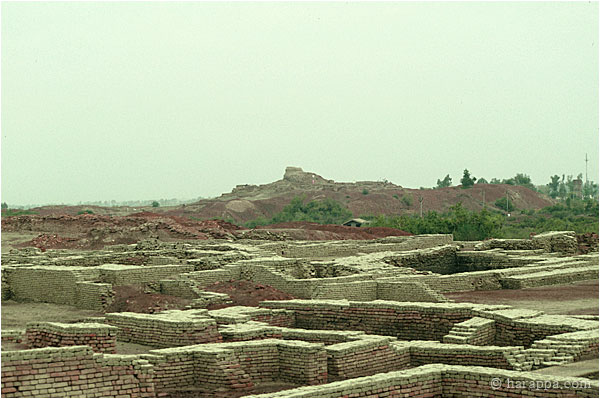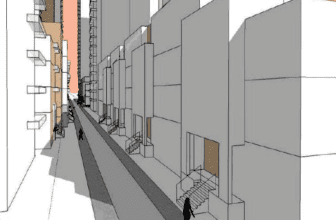Monday Flashback 3 – Mohenjo Daro
Mohenjo Daro is an archaeological site in the province of Sindh, Pakistan. Built around 2500 BCE, It was one of the largest settlements of the ancient Indus Valley civilization, and one of the world’s earliest major cities, contemporaneous with the civilizations of ancient Egypt, Mesopotamia, Minoan Crete, and Norte Chico.
Mohenjo-daro is located west of the Indus River in Larkana District, Sindh, Pakistan, in a central position between the Indus River and the Ghaggar-Hakra River. It is sited on a Pleistocene ridge in the middle of the flood plain of the Indus River Valley, around 28 kilometres (17 mi) from the town of Larkana. The ridge was prominent during the time of the Indus Valley Civilization, allowing the city to stand above the surrounding flood, but subsequent flooding has since buried most of the ridge in silt deposits. The Indus still flows east of the site, but the Ghaggar-Hakra riverbed on the western side is now dry.

This general view of houses in VS area shows the color of the brick walls after the use of mud brick and clay slurry for conservation. The lower parts of the walls have the natural reddish color of fired brick and the upper portion is oliveÐgrey mud brick.

West of the “citadel” mound are lush farmlands watered by modern irrigation channels. A levee protecting the site from annual floods divides the irrigated land from the salt encrusted sediments surrounding the ancient site. The high salinity of the site is the result of many different factors, but primarily due to increased irrigation and the lack of proper drainage.
The ruins of the city remained undocumented for around 3,700 years until R. D. Banerji, an officer of the Archaeological Survey of India, visited the site in 1919–20, identifying the Buddhist stupa (150–500 CE) known to be there and finding a flint scraper which convinced him of the site’s antiquity. This led to large-scale excavations of Mohenjo-daro led by Kashinath Narayan Dikshit in 1924–25, and John Marshall in 1925–26.[14] In the 1930s, major excavations were conducted at the site under the leadership of Marshall, D. K. Dikshitar and Ernest Mackay. Further excavations were carried out in 1945 by Ahmad Hasan Dani and Mortimer Wheeler. The last major series of excavations were conducted in 1964 and 1965 by Dr. George F. Dales. After 1965 excavations were banned due to weathering damage to the exposed structures, and the only projects allowed at the site since have been salvage excavations, surface surveys, and conservation projects. However, in the 1980s, German and Italian survey groups led by Dr. Michael Jansen and Dr. Maurizio Tosi used less invasive archeological techniques, such as architectural documentation, surface surveys, and localized probing, to gather further information about Mohenjo-daro. A dry core drilling conducted in 2015 by Pakistan’s National Fund for Mohenjo-daro revealed that the site is larger than the unearthed area.
Mohenjo-daro has a planned layout with rectilinear buildings arranged on a grid plan. Most were built of fired and mortared brick; some incorporated sun-dried mud-brick and wooden superstructures. The covered area of Mohenjo-daro is estimated at 300 hectares. The Oxford Handbook of Cities in World History offers a “weak” estimate of a peak population of around 40,000.
The sheer size of the city, and its provision of public buildings and facilities, suggests a high level of social organization. The city is divided into two parts, the so-called Citadel and the Lower City. The Citadel – a mud-brick mound around 12 metres (39 ft) high – is known to have supported public baths, a large residential structure designed to house about 5,000 citizens, and two large assembly halls. The city had a central marketplace, with a large central well. Individual households or groups of households obtained their water from smaller wells. Waste water was channeled to covered drains that lined the major streets. Some houses, presumably those of more prestigious inhabitants, include rooms that appear to have been set aside for bathing, and one building had an underground furnace (known as a hypocaust), possibly for heated bathing. Most houses had inner courtyards, with doors that opened onto side-lanes. Some buildings had two stories.








